The Noticing Hypothesis презентация
Содержание
- 2. Revision
- 4. Richard Schmidt (1941-2017) Learners cannot learn the grammatical features of
- 5. ” In the 1980s, the dominant theories of language and of
- 6. «I was learning Portuguese during a five month stay in Brazil
- 7. Noticing the gap ” In addition, we found that although I
- 8. Incidental learning vs. intentional learning
- 9. Objection 1 Diary studies encompass spans of time as long as
- 10. Objection 2 Attention/awareness may be necessary for some kinds of learning
- 11. Schmidt’s response: “If there are true cases where input is not
- 12. Objection 3 How do you know if someone paying attention or
- 13. Think-aloud research What kinds of tasks can you give your participants?
- 14. Presentations (The Ling Space)
- 15. Requirements 8 minutes minimum – 10 minutes maximum Simple language (layman’s
- 16. Topics 1 – Behaviourism 2 – Nativism (Chomsky) 3 – Cognitive
- 17. References Gass, S. (1997). Input, interaction, and the second language learner.
- 18. Скачать презентацию
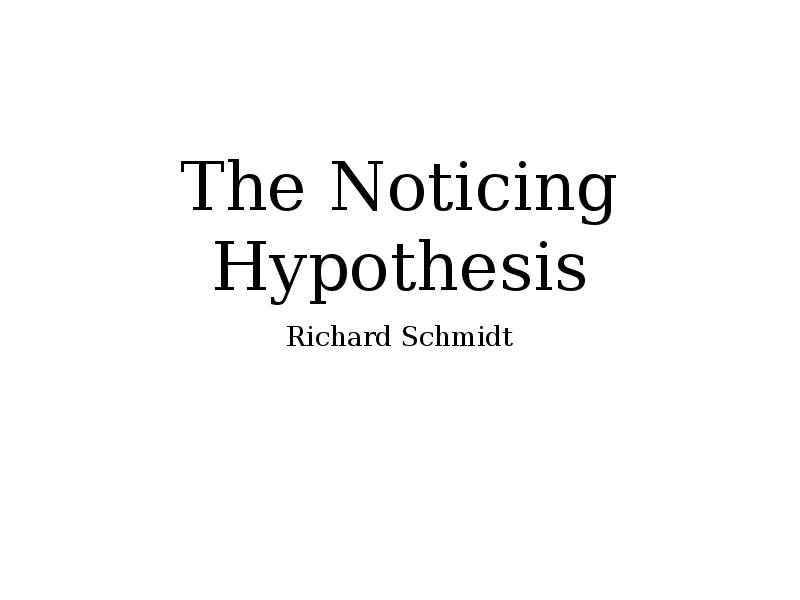
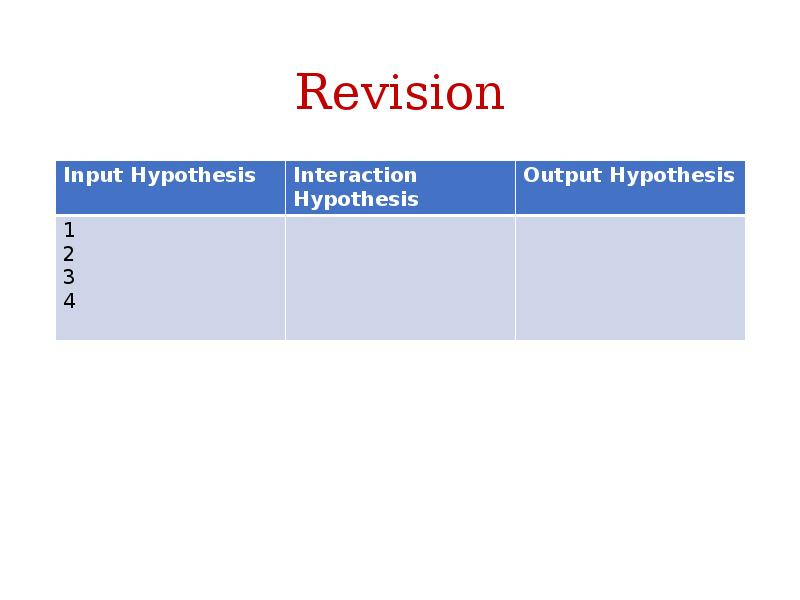
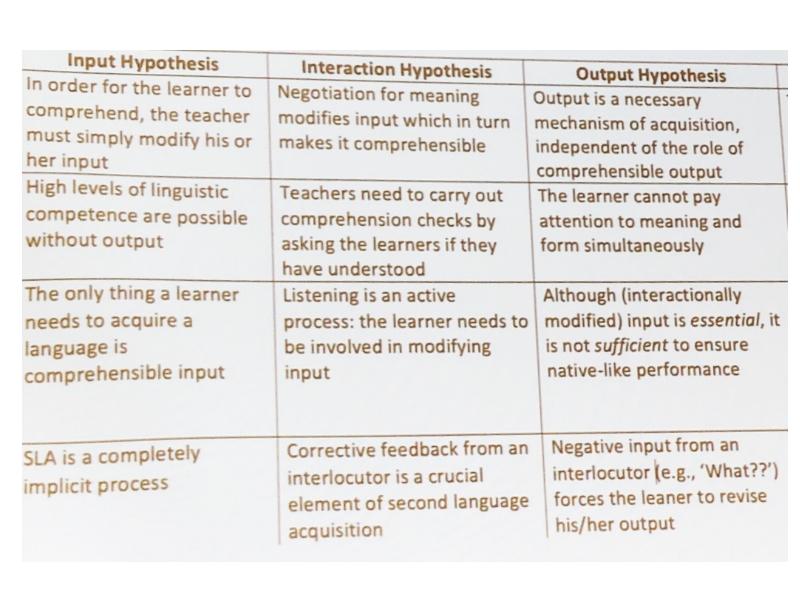
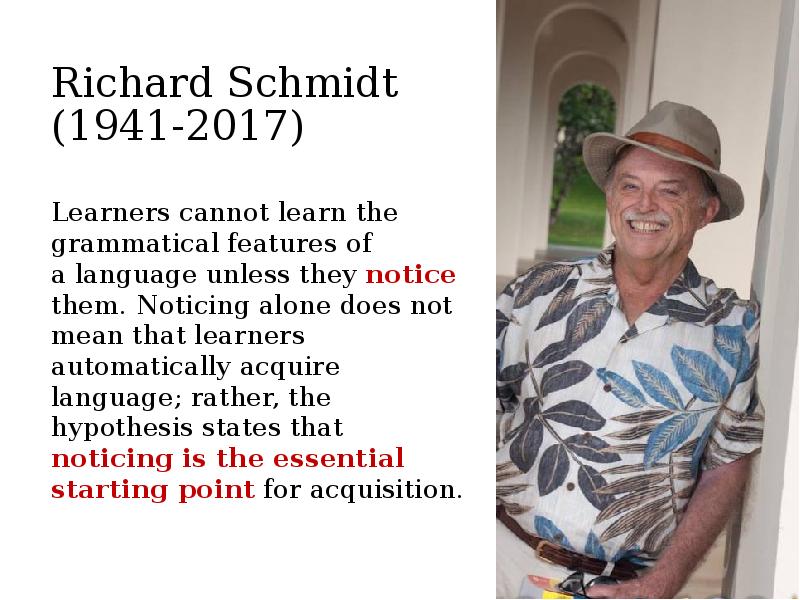
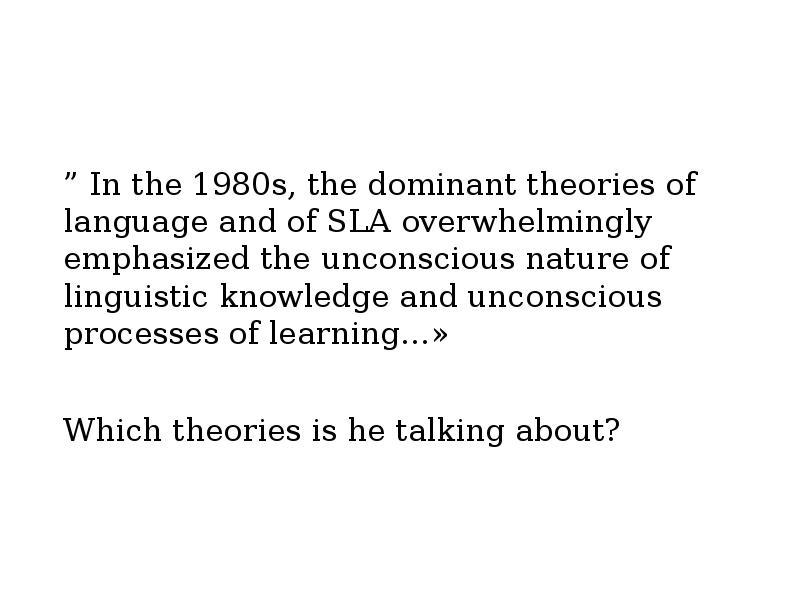
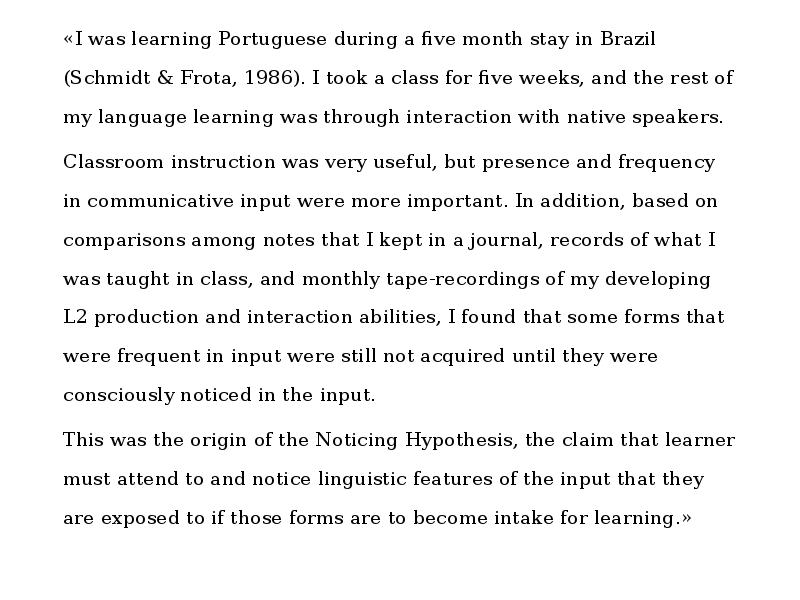
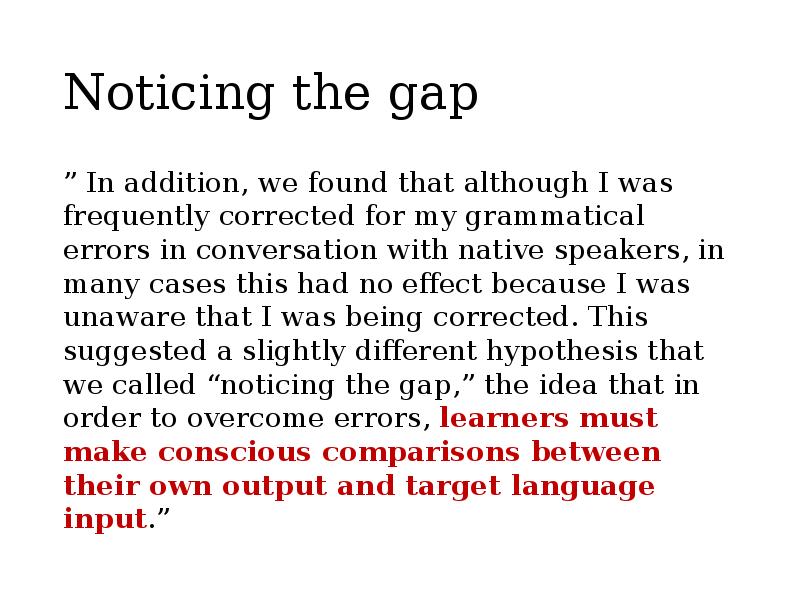
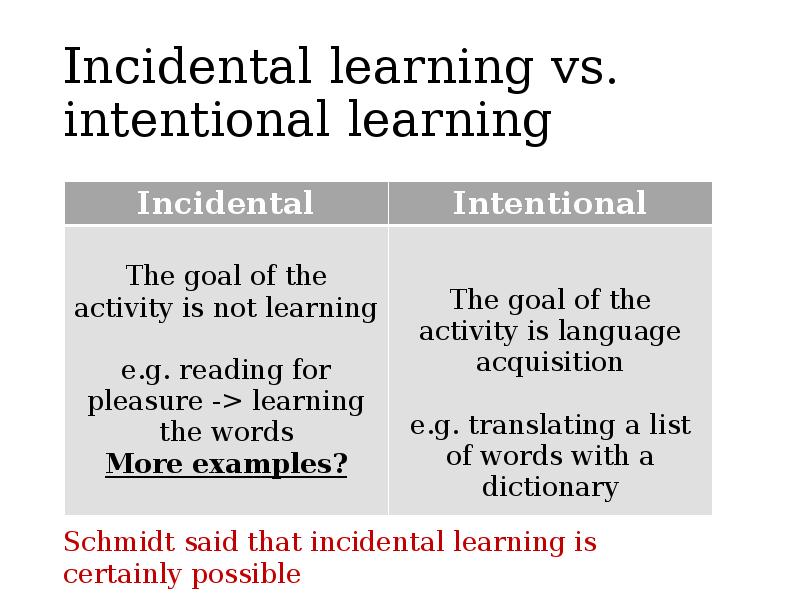
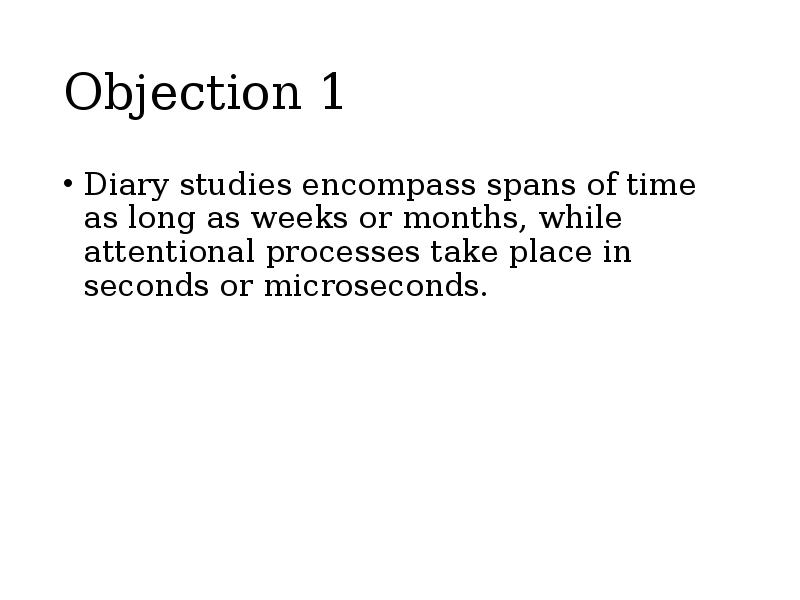
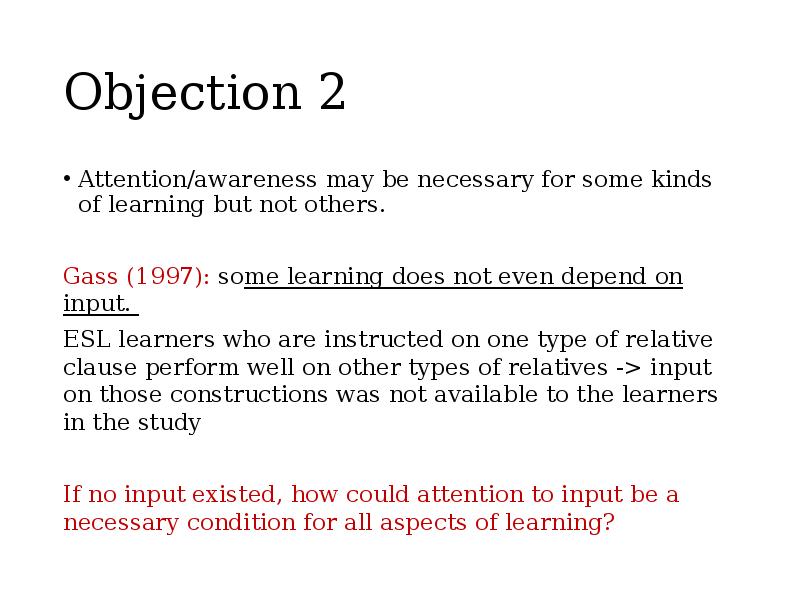
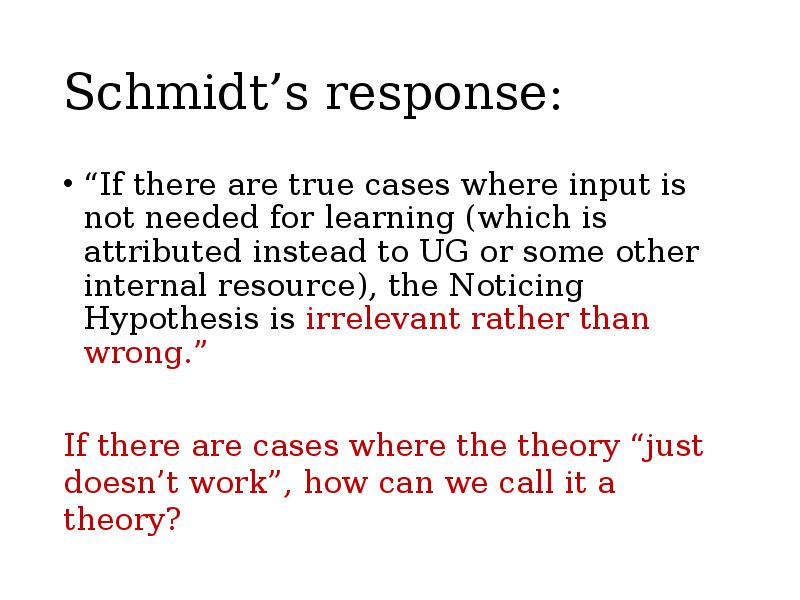
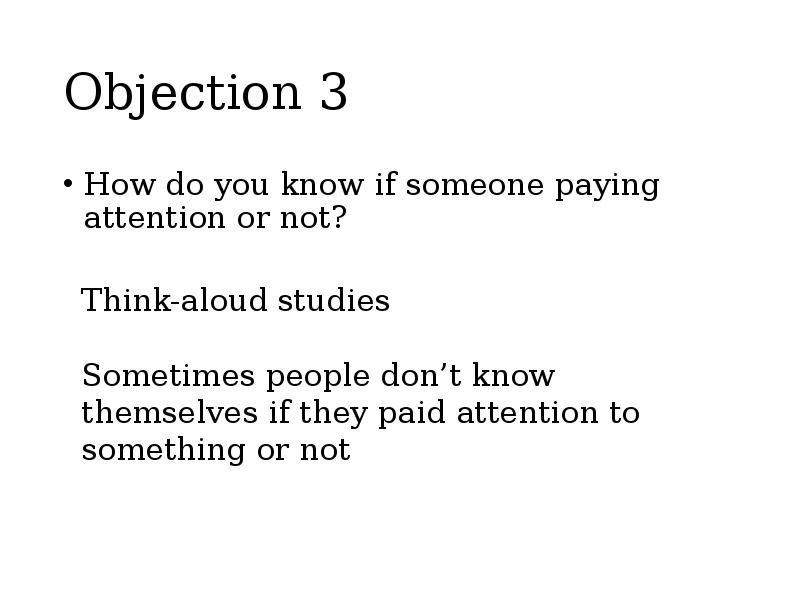
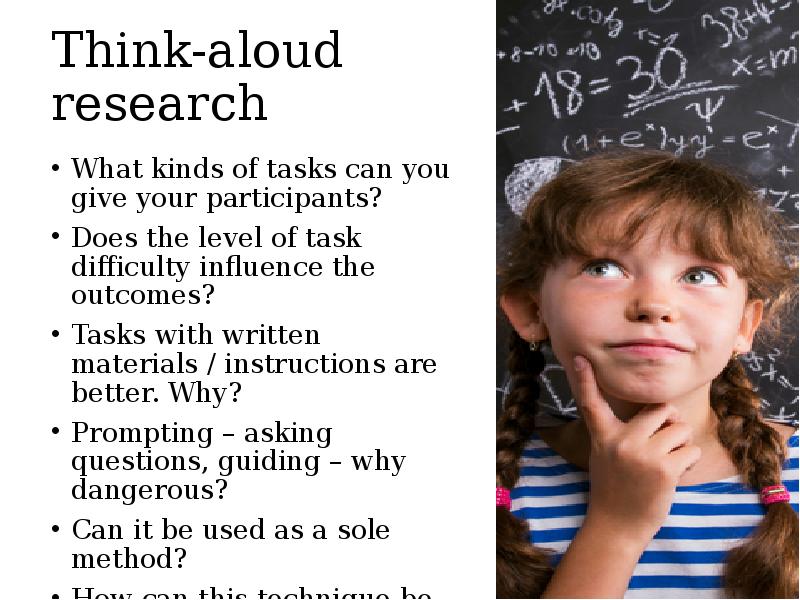
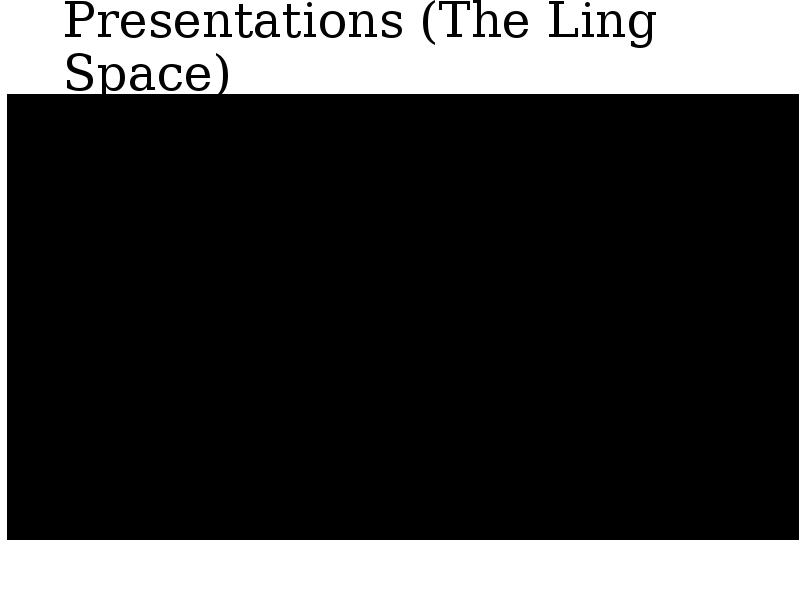
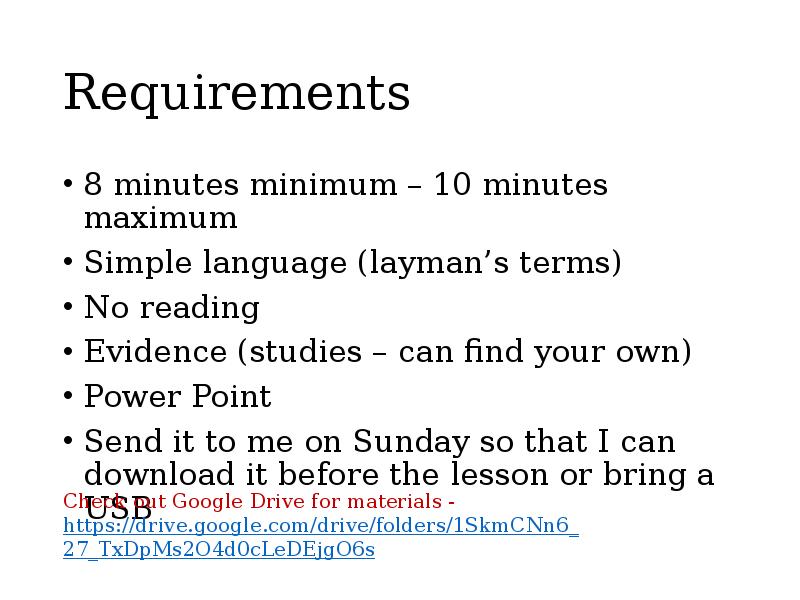
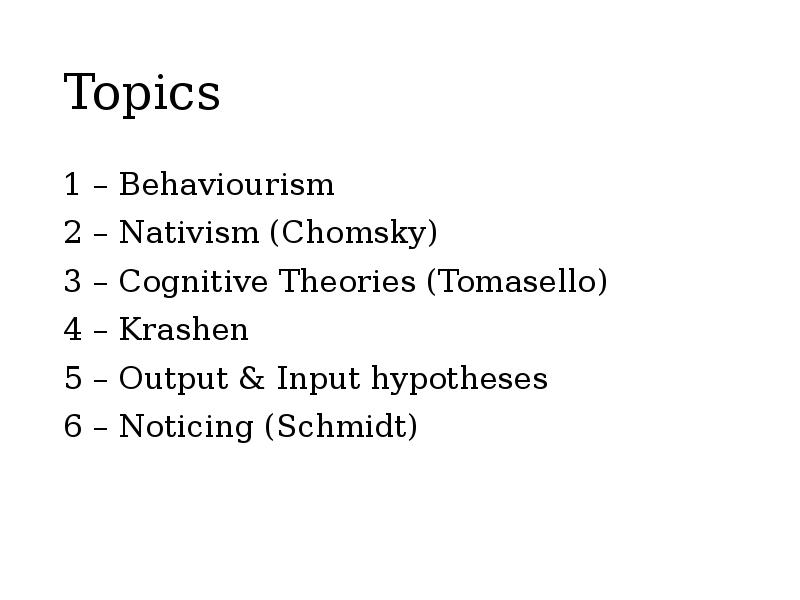
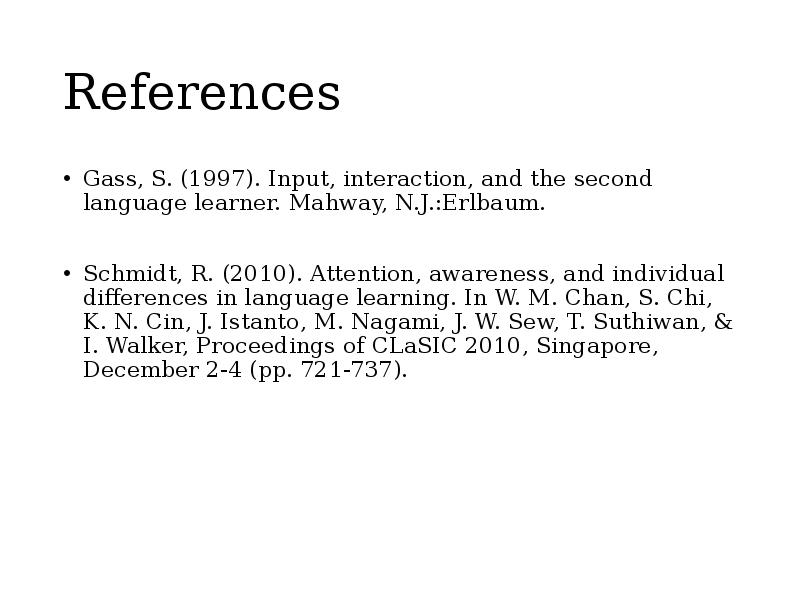
Слайды и текст этой презентации
Похожие презентации





























